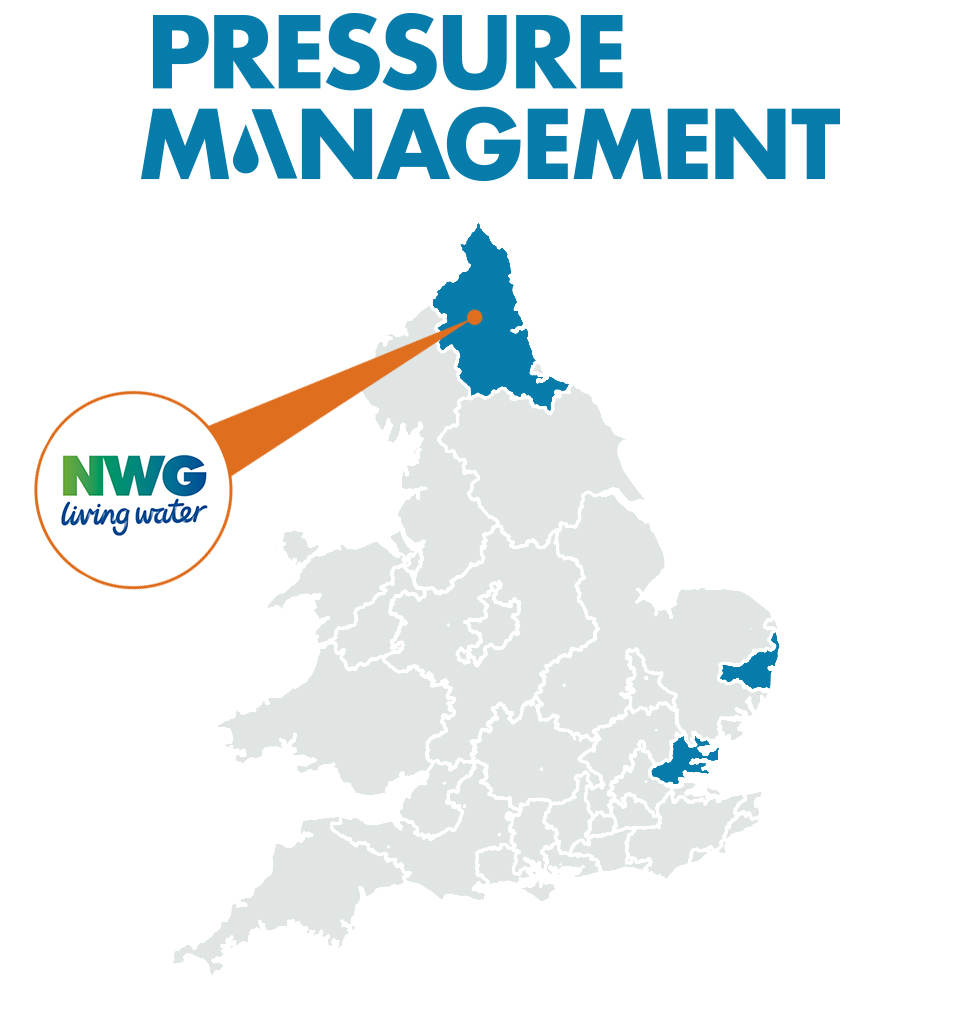Our pressure management analysis has been evolving over a number of years, but we can trace the fundamentals of our current approach to this project in Northumbrian Water. This project established the method we use to understand the hydraulics of areas, demonstrate available pressure using historic data, and build a benefits case for new pressure management schemes.
Pressure Management: Northumbrian Water
The UK water industry has run on a Sustainable Economic Level of Leakage (SELL) model for many years, allowing water companies with cheap and readily available sources to continue to run at a higher level of leakage. Excellent resource planning across the North East of England has resulted in a series of large upland reservoirs, with Kielder the most impressive. These interconnected reservoirs provide Northumbrian Water with a reliable water source, so they haven’t needed to focus on capital investment to achieve leakage reduction in the same way as other UK water companies. With a change in approach across the industry increasing the focus on leakage as a percentage of overall system input, Northumbrian Water increasingly needed to understand where they could get the best leakage reduction benefit for their money. This project looked to provide an overview of the pressure management opportunity across their entire supply network and support their overall strategy to achieve AMP7 leakage targets.

“The pressure management project identified and validated opportunities for us to improve network pressures and to reduce leakage in these areas.”
Andrew Blenkharn – Northumbrian Water
The challenge
Facing significant leakage reduction targets in both their Northumbrian Water and Essex and Suffolk Water regions, our client were keen to understand the pressure management opportunity within their distribution network.
Whilst pressure management is widely regarded in the UK industry as a resilient method of reducing leakage, it wasn’t clear exactly how much leakage would be reduced by implementing new schemes. Concerns from the wider industry about networks ‘relaxing’ to new pressures over time suggested that benefits might might not be sustained. This created a clear requirement to deliver some tangible insight into pressure management benefits calculation and their long term resilience
Our solution
Our team started by building a resilient benefits analysis approach. This involved a desktop review of best practice and discussions with wider industry experts. The approaches we identified were then tested against a large number of existing schemes installed in 2011/12, to check whether the benefits achieved were sustained in the years since. The great news was that they were, putting to bed concerns about pipe networks ‘relaxing’ over time.
We then analysed historic pressures on the network to identify opportunities for pressure reduction, including the review of historic demand events to ensure any schemes would stand up to scrutiny going forward. Our fieldwork partner for the project, Hydrosave, deployed i2O pressure loggers in areas where we believed there was both opportunity for reduction and a strong benefits case (i.e. high bursts or high leakage). This gave us the benefit of validating pressures in the areas as well as using i2O’s built in transient logging capabilities to ensure that there weren’t existing transient risks, which could undermine benefits realisation.
Successfully proven schemes were then turned into detailed design reports, showing scheme extents, enabling works, area topography, pressure management valve sizing and installation location considerations.
The results
The project produced a significant number of designs for new schemes as well as a cost benefit curve showing the likely benefits of further investigations. Many of these schemes went on to be implemented by Northumbrian Waters in house team.
We also developed a clear approach for pressure management analysis which has been applied to other water companies networks with great success.
